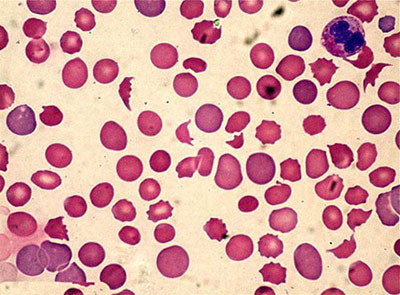Philip S. Low
Next Generation Targeted Therapeutics
Design of new therapies for sickle cell disease
Although sickle cell disease (SCD) affects only ∼90,000 Americans, it constitutes the cause of serious morbidities and mortality in millions of black patients throughout the world. Unfortunately, few SCD patients live past 45 years, and the annual costs for treating children and adults approaches $10,000 and $30,000, respectively. Even with several new therapies recently available, the quality of life still steadily decreases and prospects for new therapies outside of bone marrow transplantation remain dim.

In an effort to find a more effective therapy for SCD, we have developed a class of drugs that stabilizes the sickle cell membrane and thereby suppresses the discharge of prothrombotic membrane-derived microparticles, the release of vasculature-activating free hemoglobin, and the consequent formation of embolisms within the microvasculature that are likely responsible for the vaso-occlusive events that cause SCD. Although our search for improved drugs is still ongoing, clinical trials of an initial candidate were initiated in late 2020 at Cincinnati Children’s Hospital and Riley Children’s Hospital in Indianapolis.